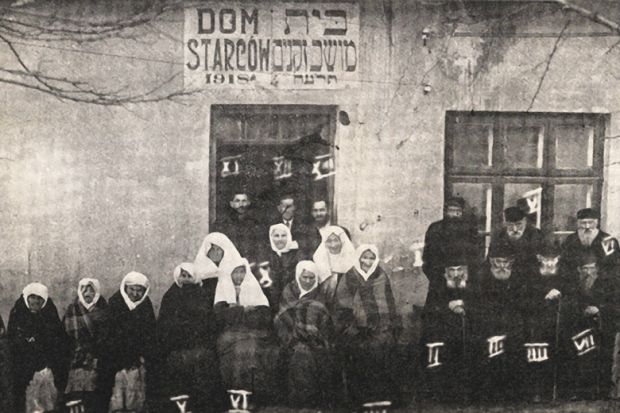The “folktale repertoire” of the literary Chelm, Ruth von Bernuth observes in How the Wise Men Got to Chelm, claims its own fantastic, indeed mythic, origins: “When God created the world, He sent out an angel with a bag of foolish souls to distribute them all over the world, but the bag tore, and all the foolish souls spilled out on the same spot.” A genuine Polish town, Chelm today bears only a few traces of its centuries-old Jewish community: a cemetery and an early 20th-century synagogue now converted into a western-themed saloon. Von Bernuth provides a comprehensive literary account of the tales of Chelm’s foolish wise men, showing their city to be an “imaginary place onto which changing questions about Jewish identity, community, and history have been repeatedly projected”.
She begins by elaborating the provenance of the Chelm stories, including Ayzik Meyer Dik’s skeletal ur-tales of Khes of 1867, showing how they emerged through a long process of “dynamic negotiation” with various literary traditions. The Wise Men of Chelm, performed by the Yiddish Arts Theater in 1933, provides an example of the Chelm tales’ hybrid affiliations, showing a point of contact with neo-Hasidism but also “resonating with echoes of European and classical Greek drama”.
Of the different forms of cultural work that the imaginary Chelm helped to perform, negotiating secular modernity, von Bernuth shows, was primary. Chelm stories often served an enlightenment (or maskilic) agenda, mocking the “narrow-mindedness inculcated by backward towns and the Hasidic lifestyle”, targeting especially the reactionary agendas of community leaders. But even the more negative renderings of Chelm tended towards idealisations, as in I. L. Peretz’s tales, with their implicit celebration of “universal foolishness”, that is, folly as wisdom.
After the Shoah, Chelm increasingly served as a nostalgic marker for a world that had been lost, “an authentic Jewish community”. Yekhiel Yeshaye Trunk, in a post-war novel about Chelm, evoked the town’s “ruined past” (his story ostensibly based on “an old record book…found in the attic of a mikveh”) – with the town now presented as what von Bernuth calls a “timeless super-shtetl”, “a parable for the whole world”. Trunk’s narrative climaxes with a conference that includes “the best known fools in Yiddish folklore”, as well as a keynote speech by none other than Albert Einstein. Despite the physical destruction of European Jewry, through Trunk’s narrative, the imaginary Chelm persists as a fantasy, and the older Judaism of Europe, as von Bernuth notes, “has a future”.
For all the insights of How the Wise Men Got to Chelm, von Bernuth sometimes seems overly enchanted by the tales, occasioning an interpretive reticence in relation to some of the texts that she invokes. She does, for example, relate that Trunk’s climactic conference scene ends with a Chelmite “placing a yarmulke on Einstein’s head and offering him water for the ritual purification of his hands”. She stops short, however, of interpreting these details (perhaps the religious sanitisation of Einstein expresses anxiety about how the fantasy world of Chelm might fare in an age of secular modernity?). But of course the Chelm tales are enchanting (a “cause for laughter”), and von Bernuth succeeds admirably in showing how the mythic locale allowed for the expression of various Jewish fantasies and anxieties over the past century and a half, and indeed continues to do so today.
William Kolbrener is professor of English, Bar-Ilan University, Israel, and author of The Last Rabbi: Joseph Soloveitchik and Talmudic Tradition (2016).
How the Wise Men Got to Chelm: The Life and Times of a Yiddish Folk Tradition
By Ruth von Bernuth
New York-University Press, 336pp, £28.99
ISBN 9781479828449
Published 18 October 2016
Register to continue
Why register?
- Registration is free and only takes a moment
- Once registered, you can read 3 articles a month
- Sign up for our newsletter
Subscribe
Or subscribe for unlimited access to:
- Unlimited access to news, views, insights & reviews
- Digital editions
- Digital access to THE’s university and college rankings analysis
Already registered or a current subscriber?




